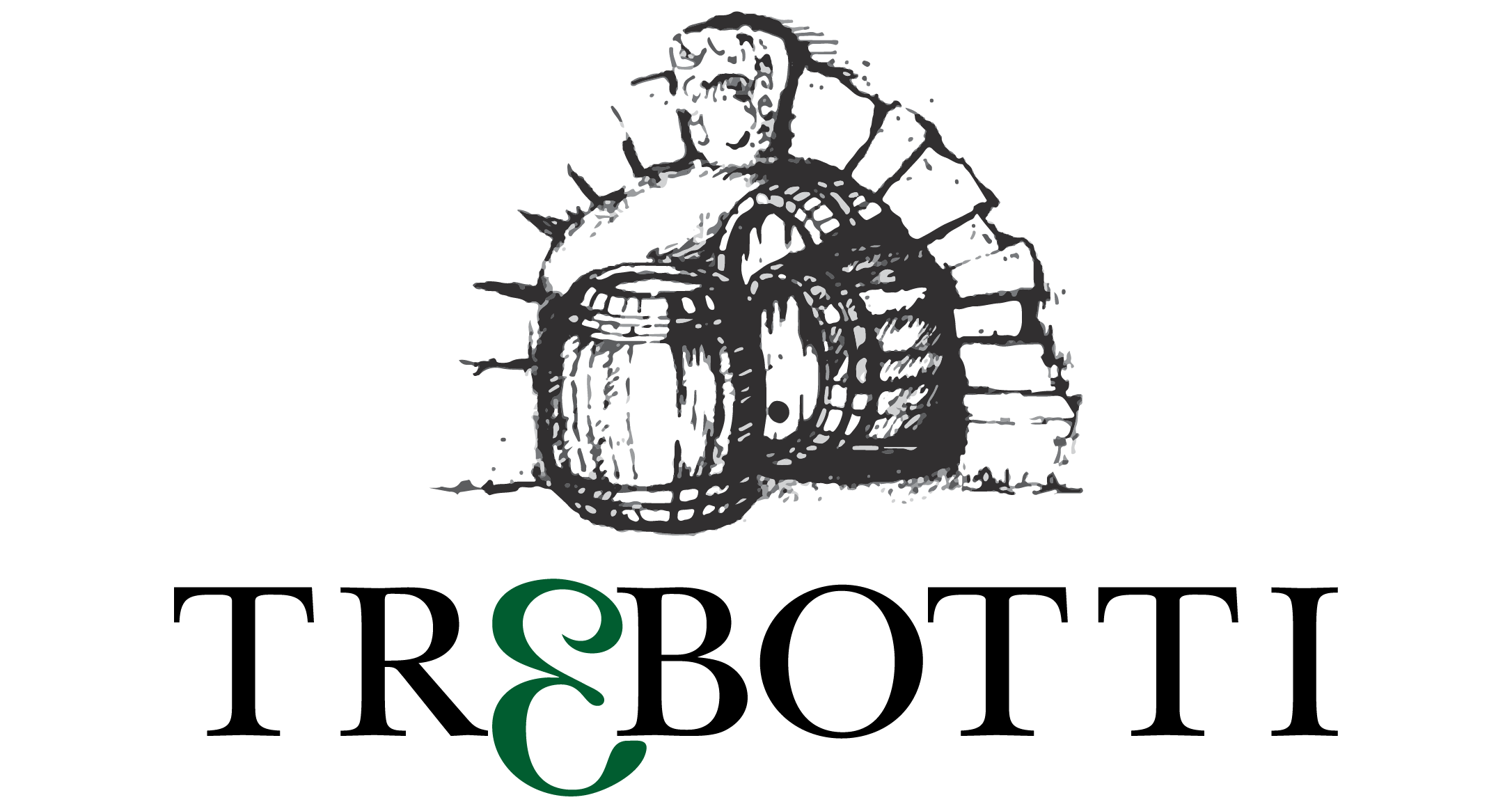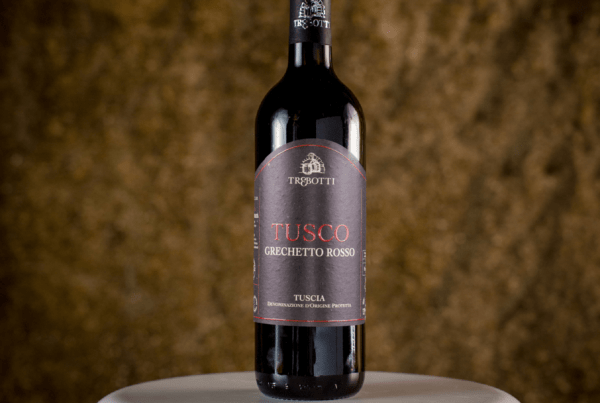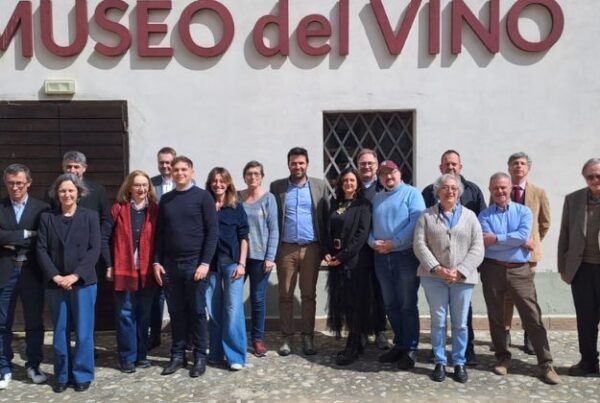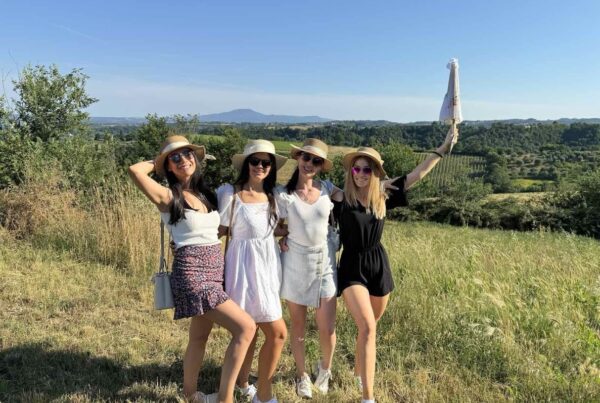
Today, across volcanic lake Bolsena from the town of Gradoli, in the Viterbo province, created in 1927, of the north of Lazio, region of Rome, in the Teverina valley where on its way to the Italian capital the Tiber river runs with the Cimini apennines by Lazio’s border with the Umbria region at the train station of Alviano where a dam built in 1963 made the shallow WWF Alviano lake oasis, along a line that defines the comune of Castiglione di Teverina and, southward, that of Civitella D’Agliano are some of the top sites for growing the Tuscia zone’s Violone red wines. Cultivated along with star white-wine Grechetto, in this place of valley, castles, towns small and steep and a little forgotten elsewhere, of superposition of Etruscans’ places and pieces of Papal State Umbria turned Italy in 1860 against the final decade of Rome’s sovereignty and of Tuscany once Duchy, passed through by those on Grand Tours from Florence to Rome and who provide much of the zone’s written history, Violone is conjointly prosperous and cheerfully brash Montepulciano, winegrape grown widely throughout Italy, included in one-third of Lazio’s DOCs, and of uncertain origins within the nation.
Being turned like this from landscape into place, Tuscia might need more qualifiers. As place, it is a disturbance that is sum of other interferences: stretched from Rome, in parts where it is apennine, Lazio overlaps as well with waves of Umbria and of the 96-year-old province. La Tuscia Romana, a collection of authors titled their 1990s data-driven study of this unbounded by and large definable territory. The Tuscia viterbese, offers Ludovico Botti, one of three siblings running the 2005-founded Trebotti estate in Castiglione di Teverina — town on a hilltop facing the Tiber valley and border with Umbria and which in 1870 left the last-standing Papal State to become a part of the Kingdom of Italy days before the Italian army took Rome and what remained of the Church’s lands into the new kingdom — in answer to if Tuscia always means where we are when I visited earlier this year. Every part of Lazio is a distance from Rome, he says. So, carried on in combination, etruscan, laziale, and national the line between his and the comune to the south goes through a meadowed strip called Cipolletta for the wild onions that grow there and which lends its name to a vineyard where the family has planted some of their Violone and which Botti tells me is a top site for it — “ a grand cru,” he says, and that they turn one-third of it to wine in vetrified clay vessels. In this valley, they rent 13 hectares and own 16 more, ten of which, not-forest, are arable: wheat, olives, grasses, meadow, vineyards including a single site of one and a half hectares of Manzoni Bianco — his is a branch of a family for 160 years in the Veneto region’s Treviso province, related to agronomist and politician Luigi Manzoni who made this cross of Riesling Renano and Pinot bianco there in the 1930s. Manzoni Bianco is not as productive here as it is is closer to its first home, Botti says. They measure the CO2 they emit — 42% of global carbon emissions, he explains, is from agriculture including production of food products; among other sources, because of “respiration of soil organisms and plant roots,” soils store large amounts of this gas and release it when the land is turned — and in 2019 thanks in part to cover crops, Trebotti counted itself carbon-neutral. In 2023, they’re running carbon-negative.
To us and other animals, carbon dioxide is toxic for breathing; for keeping temperatures low enough that we all, CO2-breathing plants like grapevines included, can survive, it is bad, too, in heavy solutions in the highly populated and temperature-moderating seas and oceans. During a volcanic eruption, it is part of the vast majority of the gasses added into the air along with water vapor and sulfur dioxide, and formed and released during winemaking fermentation, like SO2, in barrels or bottles it protects wine from quality-destroying oxidation. From eruptions of the Vulsini volcanic complex’s Bolsena (from which the Bolsena caldera and then lake, and also Castiglione’s hill) 300,000 until around 160,000 years ago which redefined air and ground into lava and ash about lines of fire,“diaphanous and ephemeral, most ‘obscure’ in human experience,”1 sea-changes reached everywhere here and on the way to Rome as far as Orto, where the train passing through back to the city traces a notable shift from green to buildings that will now keep up into city all the way back, to harden, tractably, tens of thousands of years later. Imagine making a stillness out of that. Or stable groundings. But grapevines are a twisting, sounded styles into a telling and along with Violone and Manzoni Bianco, Trebotti also grow Grechetto, well vinified throughout geographical-central Italy and of particular meanings here in the Tuscia of Alto Lazio. Wines varyingly akin to today’s Grechetto seem to have been cultivated — domesticated, favorites chosen for propagation, made over and over against what threatened too much divergence from what this wine grape was thought to be, to make a certain kind of wine — here for centuries in the old Etruscan lands ignored much later by travelers hurrying through to get to Rome. A border variety, the Trebotti website reads of Grechetto. Here, we are in crumbly tufo rock made of that volcanic ash and many years, and Trebotti’s “Incanthus” of last year’s fruit is a deep glinty gold, a damp sense of tannins, plenty of yellow fruit and herbs and thunderous minerality and acidity in waves, warming, drying, occasion of rock-fall which is air, too. They work with five varieties — add long-Tuscian Aleatico, and Sangiovese here called, and by Trebotti labelled, Grechetto Rosso, both red-wine grapes that were widely called Montepulciano for longer than they weren’t — to make two varietal wines of each, and where there are olives (Moraiolo, Canino the most typical of Tuscia, Italy-wide Leccino) here drops into forest. Above those gathered trees, the Vigna Grande site: already “twenty years before we arrived,” Botti says, “it was Castiglione’s most famous vineyard.” Someone had unplanted it. In 2004, his family planted it to Violone. Cool and crumbly, the Tuscia’s place lines are as easy to see and touch as the walls of the now-winery’s 2,500-year-old Etruscan tomb running in 100-millenary layers of the explosions’ melted stone, gaseous mix, and dust cooling into a kind of pebbles as they fell, small hot unconsolidated volcanic fragments no wider than a-little-more-than-an-inch pretending to lightness like air, iterative occasions themselves of fresh magma, solid magma from a prior eruption, or rocks through which eruptions passed. In these old tombs, the Botti’s ancestral-method — single fermentation, stopped, bottled, then set in warmer temperatures for four months to pick up again — disgorged, sparkling Manzoni Bianco “L’Ancestrale” is held for at least three years, that period guided by vintage. Of 2015 they made their first one, into just fewer than 600 bottles, 20 of which were held from sale; of 2016’s just more than a thousand only eight (in May anyway: when I check back with Botti in late September there are just seven left) remain. None were made in 2017: that growing season’s 80 days of drought. None in 2018, three hail events. A few of 2019’s 1,588 bottles (including one we opened and tasted in May, delicious and complicated, the insistent stoniness, delicateness of pear, rich elegance typical of this cross, the difference of Lazian grandness through the Botti’s attentive technique and acidity of place, pliable and rushing) have been pre-released, the rest will be released at Christmastime. When this highly demanding wine is made, it is from 3,500 kg of grapes per hectare; that the past four vintages of it do not exist is an accounting of those years’ fast and inhospitable weather changes.
On the land Trebotti farms and in which the winery is cut into a hillside in the summer greenly lush, there is also a compost heap, a site of nonboundaries in the odds and ends of cuttings, browning detritus, new exuberance of plants growing in those (in the vineyard, in varying quantities according to variety, vinifera like many other plants produce allelopathic substances to stop other plants’ growth, and can also make it hard for younger vines to take), local hilliness, and sky. It offers 20% of the fertilization the winery needs. The Botti’s vines are planted per propaggine, per winegrower reaching a long flexible cane to the ground, lightly cutting each bud that can easily touch the soil, burying those parts of the offshoot so that, underground, buds instead of becoming leaves become roots, and in two or three years above ground the cane is cut, new vine from the first. Like a soft triangle in the distance, alone and in another comune, monte Soratte has been monastery and a bunker. Formed closer, above this vineyard is monte Cimino, the tallest of the viterbese appenine range and where chestnuts trees lumbered for local and exported winemaking barrels in the middle of the past century have long grown. Botti is working to have barrels made from there again. On an exterior wall bright and quiet to the side, fairytales of the Botti family guard this all: among their symbols their donkey (Jane) framed in vines with red and yellow grapes, Bolsena volcano, the Fivi logo (on whose national council Botti has sat, Lazio’s first representative, since 2022), and a protective cattle egret upon one of three barrels, painted, I hope in chestnut, by one of the artists who have recently turned fables into murales throughout the nearby town of Sant’Angelo di Roccalvecce. One way to deal with chestnuts’ notoriously intrusive tannins, Botti explains, is to use wood that has been aged for a decade. Cellars have not stopped being made by people here: tufo is easy to dig into.
Back to Grechetto. Here, tying Lazio into Umbria is the Orvieto DOC, which although holding a 1967 vineyard of Orvieto-mix vines Trebotti doesn’t make and which the Sergio Mottura winery, Trebotti’s neighbor over that line with Civitella D’Agliano and across little more than 3 km of vineyards, large forest patches, and even this far inland mediterranean brush, does. In these wines Grechetto must work with, composting with Tuscany, the local Trebbiano Toscano whose divergences and name Procanico indicates that it has been long cultivated here. Together they must take up at least 60 percent of the blend. Castiglione and Civitella are two of the five Lazio comuni included in the Orvieto DOC; the other 13 comuni are in Umbria. Together, they help in thinking about Tuscia as superposed place and are chances for other white grapes found, the denomination announces, “suitable to be grown in the Umbria region and the Viterbo province,” to join in: examples of those include Verdello (most strongly present in Bianco di Pitignano wines in Tuscany’s Grosetto province on Viterbo’s north) and Rupeccio, officially registered as Canaiolo Bianco, an allowed white-grape component in Tuscany’s Sangiovese-based Carmignano wines, and in Umbria called Drupeggio. “We think this area is best for whites,” says founder Sergio’s son Giuseppe Mottura, now head of the winery that has been built, cool deep softly cellar steps and walls into the tufo of the town of Civitella D’Agliano, which he also serves as mayor.
